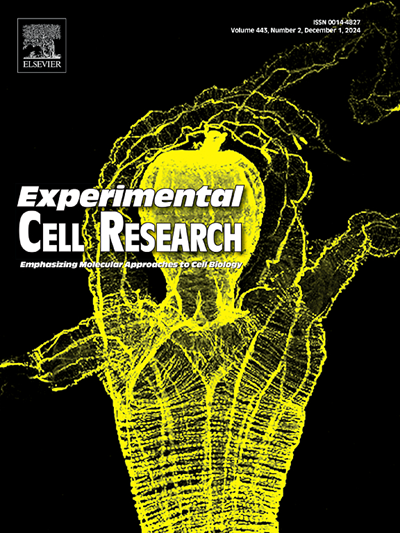UPRmt alleviates bone cancer pain through the restoration of mitochondrial function
IF 3.3
3区 生物学
Q3 CELL BIOLOGY
引用次数: 0
Abstract
The mitochondrial unfolded protein response (UPRmt) is an intracellular retrograde signaling process that facilitates the restoration of mitochondrial homeostasis. Mitochondria are essential for neuronal signaling, and their dysfunction has been implicated as a significant mechanism in the development of chronic pain. Nevertheless, little is known about the exact function of UPRmt in bone cancer pain (BCP). This research intended to explore the connection between UPRmt and the progression of BCP. In BCP group, the ultrastructure of spinal cord mitochondria was disrupted, accompanied by a decline in ATP levels and a decrease in Mitochondrial membrane potential (MMP). Concurrently, mRNA and protein levels of UPRmt marker proteins (Atf5, Hsp60, LonP1, and ClpP) were upregulated, with the expression of Atf5, a key transcription factor of UPRmt, notably enhanced in spinal dorsal horn neurons. Nicotinamide riboside (NR)-mediated pharmacological augmentation of the UPRmt significantly alleviated BCP-induced nociceptive hypersensitivity, as demonstrated by elevated mechanical withdrawal thresholds and diminished spontaneous flinching behavior. Concomitant mitochondrial functional recovery was evidenced by restoration of MMP and normalization of ATP level. Notably, genetic knockdown of activating transcription factor 5 (Atf5) abolished both NR-induced UPRmt activation and the consequent protection against rotenone-mediated mitochondrial dysfunction. These findings establish UPRmt potentiation as an effective strategy for ameliorating mitochondrial dysfunction and attenuating BCP-associated nociception, proposing this pathway as a novel therapeutic target for clinical pain management.
upmt通过恢复线粒体功能减轻骨癌疼痛
线粒体未折叠蛋白反应(UPRmt)是一种细胞内逆行信号传导过程,有助于线粒体稳态的恢复。线粒体对神经元信号传导至关重要,其功能障碍被认为是慢性疼痛发生的重要机制。然而,关于UPRmt在骨癌疼痛(BCP)中的确切功能知之甚少。本研究旨在探讨UPRmt与BCP进展的关系。BCP组脊髓线粒体超微结构被破坏,ATP水平下降,线粒体膜电位(MMP)降低。同时,UPRmt标记蛋白(Atf5、Hsp60、LonP1和ClpP)的mRNA和蛋白水平上调,其中UPRmt关键转录因子Atf5在脊髓背角神经元中的表达显著增强。烟酰胺核苷(NR)介导的upmt药理学增强可显著减轻bcp诱导的伤害性超敏反应,这可以通过提高机械戒断阈值和减少自发退缩行为来证明。MMP的恢复和ATP水平的正常化证明了线粒体功能的恢复。值得注意的是,激活转录因子5 (Atf5)的基因敲低可消除nr诱导的UPRmt激活和随之而来的对鱼藤酮介导的线粒体功能障碍的保护。这些研究结果表明,UPRmt增强是改善线粒体功能障碍和减轻bcp相关伤害感受的有效策略,并提出该途径作为临床疼痛管理的新治疗靶点。
本文章由计算机程序翻译,如有差异,请以英文原文为准。
求助全文
约1分钟内获得全文
求助全文
来源期刊

Experimental cell research
医学-细胞生物学
CiteScore
7.20
自引率
0.00%
发文量
295
审稿时长
30 days
期刊介绍:
Our scope includes but is not limited to areas such as: Chromosome biology; Chromatin and epigenetics; DNA repair; Gene regulation; Nuclear import-export; RNA processing; Non-coding RNAs; Organelle biology; The cytoskeleton; Intracellular trafficking; Cell-cell and cell-matrix interactions; Cell motility and migration; Cell proliferation; Cellular differentiation; Signal transduction; Programmed cell death.
 求助内容:
求助内容: 应助结果提醒方式:
应助结果提醒方式:


